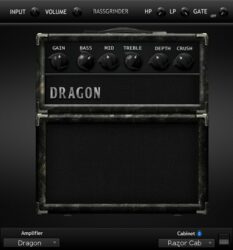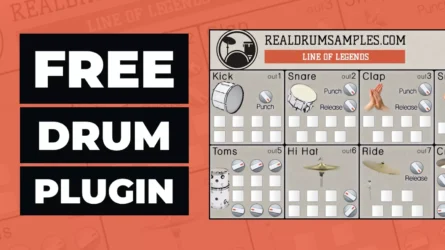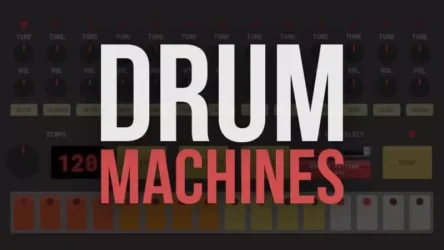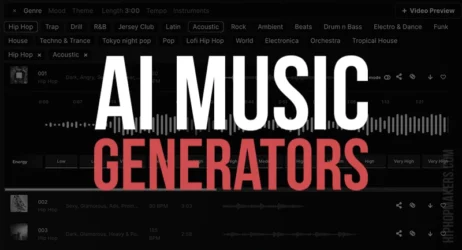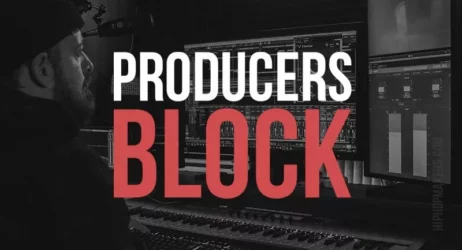Here is a beginner’s guide with video tutorials on how to make Electronic Music.
This beginner-friendly guide will walk you through seven easy steps to create your own electronic dance music.
You’ll learn about the importance of tempo, how to create drum patterns, the art of adding bass, and crafting melodies that make people want to dance.
Plus, you’ll discover how to use sound effects and transitions to make your track sound professional and the standard structure of an electronic music track.
Electronic Music is a very popular music genre and can be very technical on the production side. With tons of sound arrangement possibilities, producing electronic dance music may be hard at first.
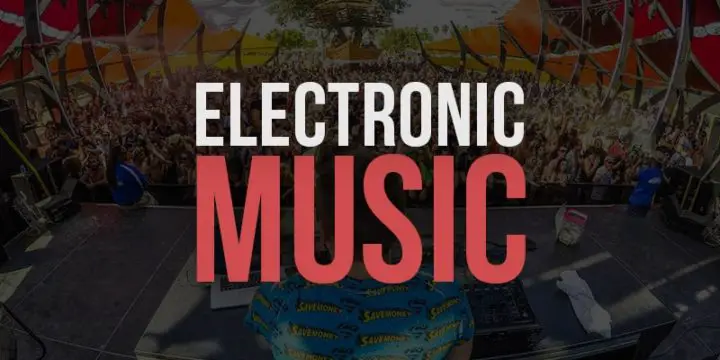
Related: Online Music Courses – 1 Month Free Trial
How to Make Electronic Music
Here are some tips to help you with the process of getting started.
1. Music Gear Basics
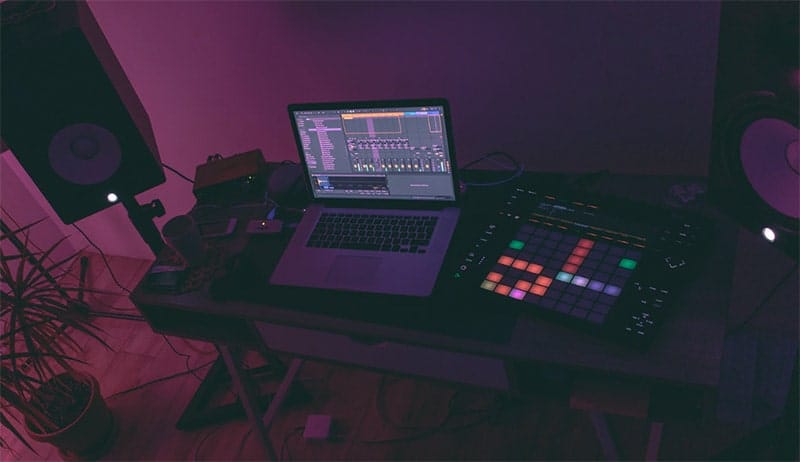
These are the basic pieces of music equipment that you should have:
- Computer or Music Production Laptop
- Music Production Software
- MIDI keyboard
- Headphones or Studio Monitors
If you do not have a preferred digital audio workstation, check out this article on the best software music programs available.
If you don’t have money for music software we also have a list of free music software programs you can download.
Related: 25 Free EDM VST Plugins For Electronic Dance Music
2. Electronic Music Tempo
In electronic dance music, the tempo usually ranges from 120 to 130 BPM, with 128 BPM being the most common.
This is so DJs can easily sync different tracks. So this is something that should be thought of in advance when producing EDM.
Related: What is EDM Music?
3. Create Drum Patterns
Most electronic dance music drums follow the standard 4/4 beat or “four on the floor”, as it is popularly known.
This makes DJ’s work a whole lot easier when syncing different tracks, but don’t be afraid to try out new patterns.
For this simple and effective beat, place the kick on each of the four beats of the bar and a snare or a clap (or even both) on the off-beat.
You can also include a hi-hat between each beat for a vintage feel.
Here is a great video tutorial with 5 tips on making great electronic dance music and house drums:
4. Add the Bass
In electronic dance music, the bass must be on point. It’s what is going to make people dance.
Make sure you pick some good synth sounds to start with. A great trick is to separate the sub-bass from the upper bass.
That way you have the control needed to make your track sound clearer and heavier.
Another indispensable technique when talking about bass in EDM is the sidechain effect.
Mixing the kick and bass can be very difficult since both are at similar frequencies of the spectrum.
That’s where the sidechain comes in. It consists of pumping up the volume of the bass each time the kick comes in.
Check out this video to learn how to create the sidechain effect in FL Studio.
5. Harmony & Lead Melody

Another two important aspects of an EDM track is the harmony and the lead melody.
this is where the catchiness of the song resides.
It’s always worth it to learn basic music theory to make sure you can bring your musical ideas to life.
5.1 Synth Basic
Starting with the melody creating a simple harmonic progression with three or four chords will be more than effective.
From there you can create depth by layering synth pads and atmospheric synth sounds.
Related: 100 Best Free Synth VST Plugins
5.2 Lead Melody
For the lead melody try to keep things simple: a catchy and easy-to-remember beat will go a long way.
This is true for the sounds you pick for the melody too.
Try a saw-type synth and automate the controls such as the filter cutoff for a more interesting sound.
6. Sound Effects & Transitions
Adding the right effects and creating great transitions can help to make your track sound professional.
An effect widely used in electronic dance music is a white noise sound.
From building tension to releasing it, this type of sound is one of the most versatile to use.
With instruments such as bass, harmony, and lead, you can try using automation to spice things up a bit.
Related: 50 Best Free VST Effects Plugins
7. Song Structure
The structure is a very important part of your track. In electronic music tracks usually start with an intro of 15 seconds to 1 minute.
Then there’s the verse, the drop, and the outro in this sequence:
Intro – Verse – Drop – Verse – Drop – Outro
This is the most common structure for electronic dance music tracks.
But you can always try to be creative and change it up.
How to Make Electronic Music Tutorials
How to Make an EDM Drop
How to Make EDM Music – Build-Up and Drop
Here are tips for making electronic music in FL Studio.
How to Make a Simple Electronic Drum Beat
Related: Martin Garrix In The Studio With Future Music
Becoming a good electronic music producer requires much more than merely owning an array of electronic musical instruments or having a lot of sounds at your disposal.
The journey to producing electronic music that resonates with audiences involves a combination of technical skill, creative spark, and a profound understanding of EDM fans.
When you start creating your own electronic music, you’re embarking on a rewarding journey of learning electronic music production.
Just as with traditional musical instruments, electronic instruments have their own unique quirks and characteristics that need to be mastered.
As a beginner producer, you must embrace the process of making music, from laying down drum sounds to crafting catchy melodies.
Becoming a good producer in the realm of electronic music entails exploring different sounds, applying effects plugins in innovative ways, and getting hands-on experience with a range of tools.
These might include drum machines, midi keyboards, and a plethora of music-making software options, such as Ableton Live, FL Studio, Pro Tools, or Logic Pro, which are among the most popular DAWs.
It’s about more than simply mixing EDM; it’s about breathing life into your sonic ideas to create electronic songs that evoke emotion.
The production process isn’t always a smooth ride. As you work on your own music, you may encounter challenges that test your resolve.
Stay motivated, though, because every hurdle you overcome brings you one step closer to mastering the art of producing music.
There’s never been a better time to get started in the realm of EDM production.
The vast array of online tutorials and sample packs available provides you with everything you need to produce music that not only sounds good but also reflects your unique musical vision.
Here are ten bonus tips on how to make electronic music:
1. Invest in a good set of studio monitors. This will allow you to hear your recorded music in greater detail, enabling you to make subtle tweaks to perfect your mix.
2. Keep experimenting with new sounds. This will prevent your music from becoming stale and will provide a constant source of inspiration.
3. Learn the ins and outs of your DAW software. Watch online tutorials and read manuals to get the most out of your chosen platform.
4. Don’t be afraid to use software instruments. They offer an incredibly versatile range of sounds that can add depth to your productions.
5. Learn about song arrangement. Understanding how to structure your tracks is vital to creating a complete song that flows smoothly.
6. Practice with drum loops. This can be a great starting point for many producers and can help you understand how to layer different sounds.
7. Network with other electronic music producers. Collaboration and knowledge sharing can lead to significant growth and improvement in your work.
8. Try your hand at remixing. This can be a fun way to learn new production techniques and get more comfortable with your DAW.
9. Keep a list of ideas. A catchy melody or a cool drum pattern can come to you at any time. Write it down or record it so you don’t forget it!
10. Most importantly, enjoy the process. Making music should be fun, and your passion will shine through in your work, leading to better music.
Remember, becoming a good music producer isn’t about overnight success.
It’s about hard work, persistence, and the constant desire to learn.
Whether you’re a new producer just getting started, or an experienced electronic musician looking to elevate your craft, stay focused, stay curious, and above all, keep making music.
Do you have tips on how to make electronic music?
Please share it with us in the comments below.
Additional Music Guides:


